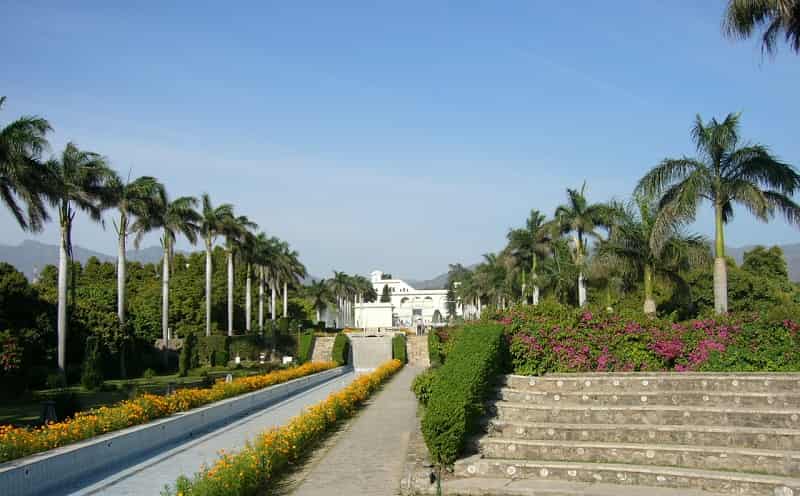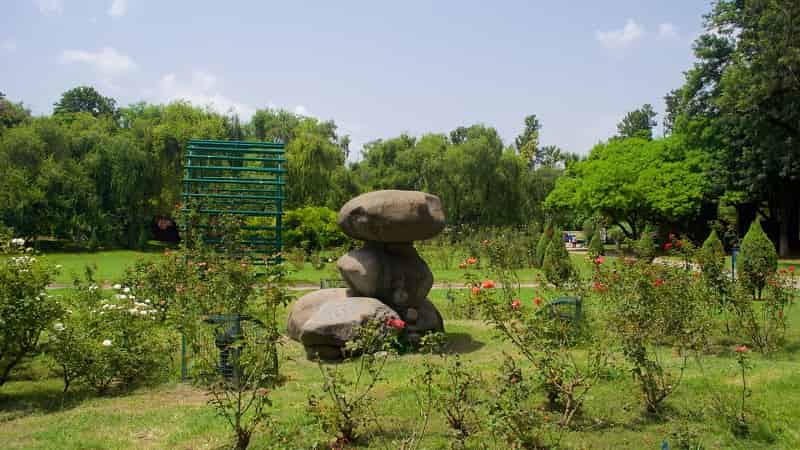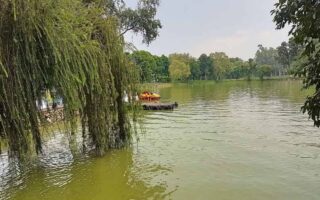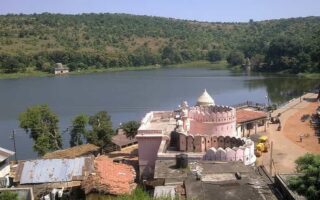The Haryana landscapes are abounded with scenic beauty and countryside vistas. The state is well known as the agricultural haven of India, which quite serves as an evidence for the accounting of the greens it possesses. Purest of the air flows through the atmosphere in Haryana. And what do you think; only the occupied agricultural lands contribute to this wonderfulness? Nope; there is more to it – the beautiful and lush gardens of Haryana.
The royal splendor and unmatched beauty of the royal Mughal Gardens at Pinjore, the wonder striking Rock Gardens and the charming rosy beauty of the Zakir Hussain Rose Garden – which is the largest Rose Garden in the whole of Asia – in Chandigarh, leave every visitor of Haryana speechless and spellbound. The best thing about these gardens of Haryana is that they have green and colorful growths and vegetation throughout the year. The climate plays a really important role here, due to which the flowers and plants stay fresh and vibrant all through the twelve months.
Pinjore Mughal Gardens

Located in the state of Haryana, the Pinjore Mughal Garden belong to the times of the Mughal Emperors. The whole architecture and plantations of the garden was designed by Nawab Fidai Khan, a Mughal Emperor of the olden times. Laid down in the 17th century, these gardens are also known as the Yadavindra Gardens. The exact location of the gardens is described as the foothills of the Shivalik ranges. The charm of the Pinjore Mughal Gardens is quite exotic and unmatched. This is the only remaining Mughal Garden in the country. As mentioned, the gardens were designed and built under the guidance and supervision of the great architect Nawab Fidai Khan, who was also a cousin of Aurangzeb, the renowned Mughal Emperor.
The same Nawab had designed the Badshahi Mosque at Lahore in Pakistan. The idea of converting the raw and wild beauty of a valley into a beautiful garden struck the architect of repute, the Nawab, when he came across this place during one of his tours as a Governor of the Province. This was where the present Pinjore Mughal Gardens are situated. The garden was planned by the Nawab in a classical pattern, representing the Charbaugs and a central water way running along the lane of stroll. The garden possesses an enviable entrance, with Minar like structures that was used to build the entrance of the palace and forts. There are patches of lush green grass and small plants, which give out flowers of stupendous colors, running along the left and right sides of the stroll lanes. There are taller trees like the palms, magnolia, and the cypress.
There is a fountain situated at a height, further, in the gardens, and it is surrounded by an artificial water reservoir, smaller than a pond. But, we’ll call it a pond for now. When the evening arrives, the fountain is turned on and the majestic water sprinkles upwards and plunges with smoky chasm in the pond.
After the Nawab fled away from this place, the later rulers, like Raja of Sirmaur, Maharaja Amar Singh of Patiala, and so on, kept the maintenance and restoration of the beauty of the Pinjore Mughal gardens running. Later, when Haryana was isolated as a self- governing state, the gardens fell into the hands of the Haryana Government and since then, they have become a place of must visit and immense tourist attraction in Haryana.
The Pinjore Mughal Gardens are just 22 km from Chandigarh main city and 14 km from Panchkula, while it is 270 km away from Delhi.
Rock Gardens

Cradled in the lap of Chandigarh, the Rock gardens serve as an essential item on the tourism menu of Haryana. The gardens were built by Mr. Nek Chand, a senior architect of repute. The Rock Gardens is built on the banks of the Sukhna Lake and is built in a forest area with thick woods around. The place is full of visitors all round the year. Though the location is catalogued under gardens, there can be found no plants, flowers or fountains here.
By the name of it, the garden may be thought to circumference lots of rocks and hills inside. Actually, the Rock Gardens are sprawled over acres of thick woods and forest area and seem like a roofless exhibition hall under the sky in the open air. Each part of the garden – be it a maze of paths or a chamber, a canyon or a rock way – each of them offers a sight of a virtual fantasy world. The strange history of the rock gardens is depicted in its panorama itself, which can be decoded only when you visit this place.
The classic work of art and architecture in the gardens is what stupefies the visitors in enchantment. The entrance is modest, leading to a magnificent arrangement of rocks, as if a surrealist might have been imbibed of all his creativity and art to give this place all the wonder it displays. Not just rocks; on display in the garden are boulders, discarded fluorescent tube lights, broken chinaware, cast away glass ornaments, waste of buildings, domestic and industrial waste, and so on. Got me? Nope? Well, this is what is the major characteristic of the Rock Gardens – all the stuff in here is built out of waste materials, that is, best out of waste; and yet amazing. This is something not all gardens or places of tourist interest may possess.
This is the real striking factor of the garden; beautiful artifacts created from waste material to display the history and Culture of Haryana. There are huts, birds, animals, dolls, etc. created out of the waste materials like broken frames, forks, mud guards, metal wires, bottle crowns, porcelain, broken glass bangles, pieces of slate, bricks, auto parts and, so on.
The most amazing festival celebrated in the Rock Gardens, and of course in the whole of Haryana and Punjab, is known as the festival of Teej, when the entire garden is colored in the festive shades and holds a special attraction for tourists and visitors. Young ladies celebrate the festival with great enthusiasm, swaying to and from on the giant tree swings and embellish their palms with the beautiful henna, creating intricate designs. Singing and dancing is obviously an inseparable part of this festival.
It’s just fun to be around in Haryana, especially at the rock gardens, during the festivals. Yet, the garden welcomes its tourists visiting it in large numbers, with great enthusiasm and sport.
Zakir Hussain Rose Garden

Fancying the lands of the capital city of Haryana, Chandigarh, The Zakir Hussain Rose Garden commenced in the year 1967. The garden was created and ornamented under the guidance and supervision of the first Chief Commissioner of Chandigarh, Dr. M. S. Randhawa. This beautiful rose garden, as the name clearly suggests, is a rose garden and is named after one of India’s great presidents, Dr. Zakir Hussain. Another jewel in the crown of this garden is that it is the largest Rose Garden in the entire continent of Asia.
The park occupies a total of 27 acres of the land of Haryana. There are over 1600 varieties of roses, represented in more than 17,000 plants. There are rows of roses of different colors and textures, with fragrances so sweet, in the garden. The rose plants are grown and fabricated in a special manner, so as to make the simple rose plants look even more special. Rather than the beauty of the roses, the Zakir Hussain rose garden seems adorned more due to the manicured designs and patterns in which the rose plants are set. Roses of different colors and shades, right from the scarlet to yellow to purple to black, as well as the blazing magentas and fire yellows, and also with soothing shades of baby pink and limes, intriguing the visitors to give out eye popping and jaw dropping expressions.
The grass and other greens in the garden are well trimmed to give a perfect backdrop to the scenic beauty of the colorful roses. Yet, the turfs seem as fresh, lush and radiant green as one witnessed by the countryside. The whole picturesque seems as if it is a decorated lawn for the most special wedding in the universe. To add to the grandeur of the Zakir Hussain rose garden, as well as the wonderful rose plants and the fresh green lawns, there are a number of fountains in the garden.
These are not ordinary fountains that sprinkle water to a height. There are lights studded besides the water pipes in the core of the fountain, which turn on and keep flickering to the beat of the music which plays in the garden, as the day wears its evening gown to celebrate the night. Some of these fountains are found surrounding the flower patches and garlands, so as to highlight the scarlets of the roses to a greater charm as it could be possible. The garden is managed under the Chandigarh tourism department and is taken utmost care to ensure the preservation of longevity and charm of the most beautiful of the plants and flowers on Earth. A visit to the Zakir Hussain Rose Garden in Haryana is one of those memorable experiences of one’s lifetime.


